Info
Subfamily: Panicoideae
Genus etymology: Sorghum = "sorghum" [italian]
Species etymology:
Photosynthetic type: C4 (warm season)
Nativity: questionable - intentional
First recorded in Hawaiʻi: 1864
Map
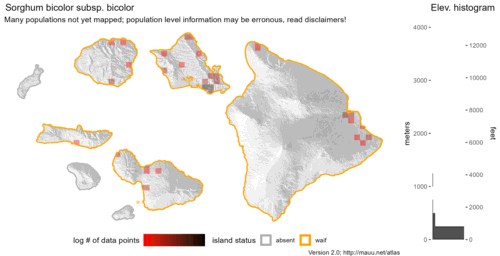

Inflorescence
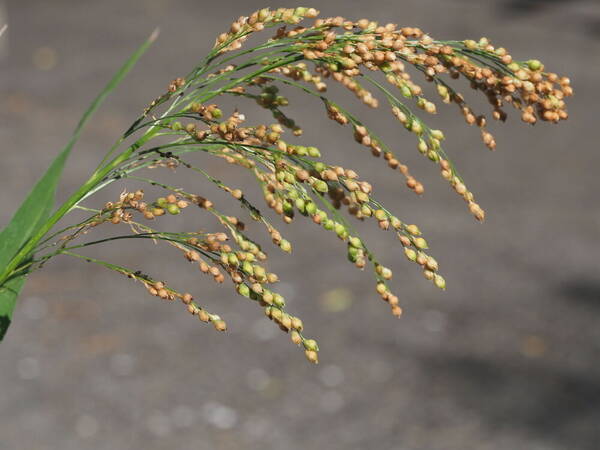
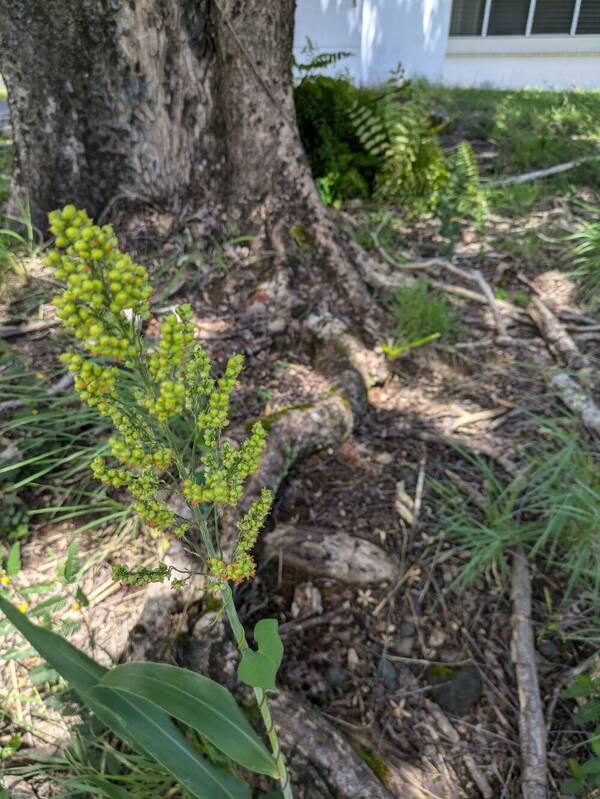
Plant
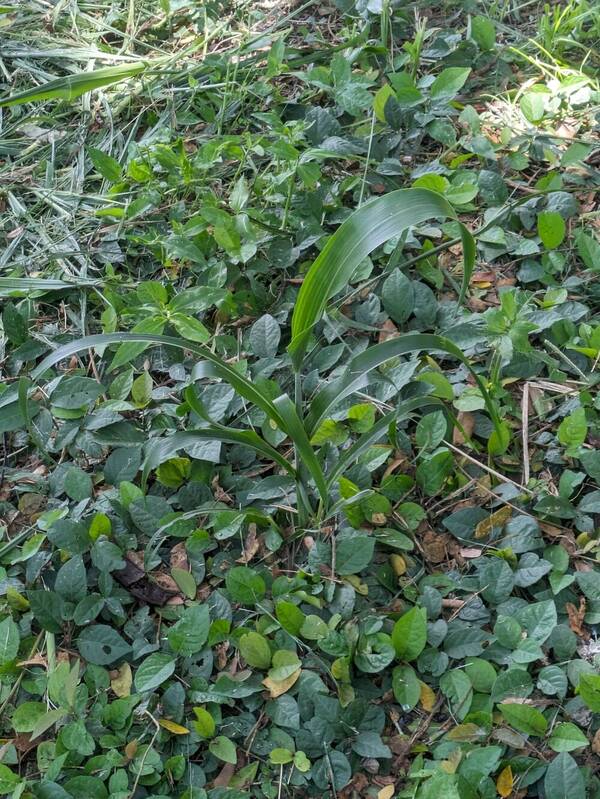
Spikelets
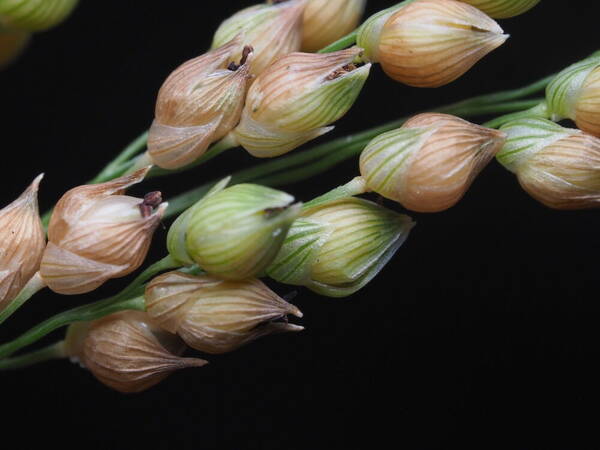
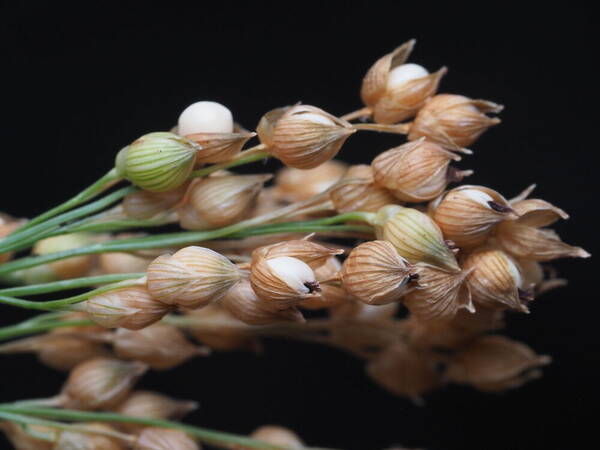
Node
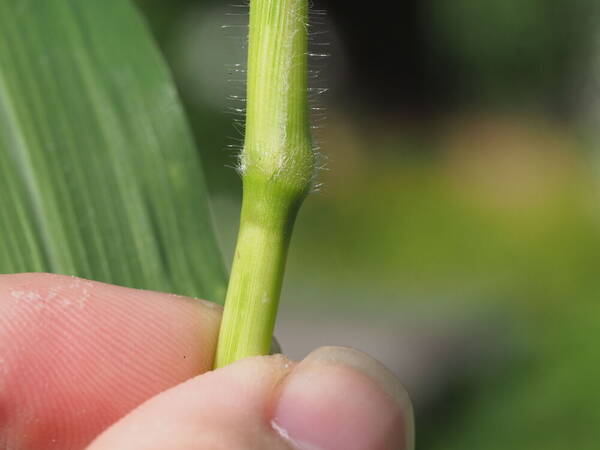
Collar
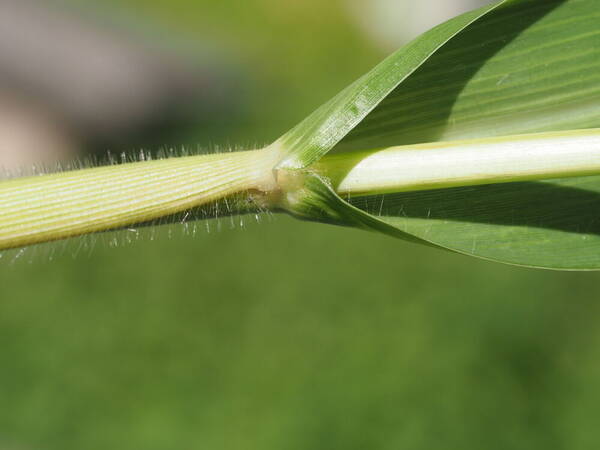
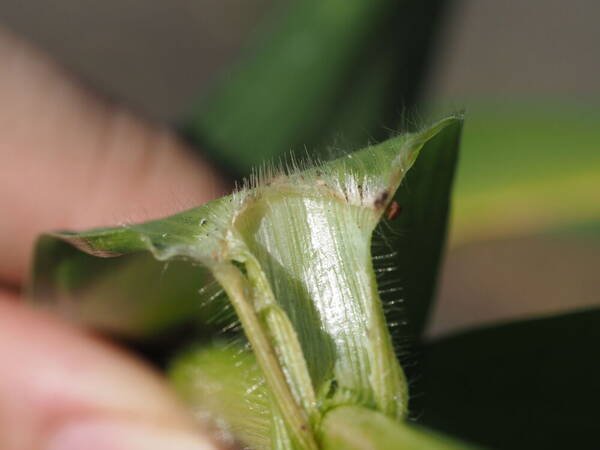
Description
Plants annual or short-lived perennials; often tillering, without rhizomes. Culms 50-500+ cm tall, 1-5 cm thick, sometimes branching above the base; nodes glabrous or appressed pubescent; internodes glabrous. Ligules 1-4 mm; blades 5-100 cm long, 5-100 mm wide, sometimes glabrous. Panicles 5-60 cm long, 3-30 cm wide, open or contracted, primary branches compound, terminating in rames with 2-7 spikelet pairs; disarticulation usually not occurring or tardy. Sessile spikelets bisexual, 3-9 mm, lanceolate to ovate; calluses blunt; glumes coriaceous to membranous, glabrous, densely hirsute, or pubescent, keels usually winged; upper lemmas unawned or with a geniculate, twisted, 5-30 mm awn; anthers 2-2.8 mm. Pedicels 1-2.6 mm. Pedicellate spikelets 3-6 mm, usually shorter than the sessile spikelets, staminate or sterile. Caryopses often exposed at maturity. 2n = 20, 40.
(Description source: Barkworth, M.E., Capels, K.M., Long, S. & Piep, M.B. (eds.) 2003. Flora of North America, north of Mexico. Volume 25. Magnoliophyta: Commelinidae (in part): Poaceae, Part 2. Oxford University Press, New York. 783 pp http://floranorthamerica.org/Sorghum_bicolor_subsp._bicolor )
Robust annuals; culms 10-30 dm tall, nodes puberulent to short-pilose. Sheaths glabrous, compressed, keeled; ligule chartaceous, 1.5-5.5 mm long, apex rounded, ciliate; blades flat, (12-)20-40(-52) mm wide, midrib well-developed, margins scabrous. Panicles dense and compact, 10-25 (-35) cm long, branches numerous, ascending to appressed, pilose, angled, the angles keeled, winged, ciliate; sessile spikelet broadly ovate, 4-6(-6.5) mm long, apex acute, glumes subequal, first glume glossy black, rounded, usually appressed hirsute, nerves 9-11, the nerves prominent at apex, second glume narrower, slightly keeled, 3- nerved at apex, first floret sterile, the lemma 3.8-5 mm long, hyaline, faintly nerved, margins ciliate, apex acute, second floret perfect, the lemma 3.9-4.3 mm long, hyaline, apex bifid, fimbriate, bearing a geniculate awn 5-8.5(-11) mm long, terminal segment of awn short, 2-4 mm long, twisted in lower part, the palea 2.5-3 mm long, hyaline, nerveless, long-ciliate; pedicellate spikelets usually sterile, rarely staminate, narrowly lanceolate, 3.8-5(-6) mm long, pedicel 0.7-2 mm long, with hairs 0.5-0.7 mm long, glumes subequal, first glume 9-11-nerved, flat to sulcate on back, clasping second glume, the second glume narrow, 3-nerved, appressed hirsute near the margins, lemma and palea 5-6 mm long, hyaline, faintly nerved, margins longciliate. Caryopsis reddish brown to dark brown, spreading the glumes apart at maturity, broadly ovoid to globose, ca. 4 mm long, ca. 3.5 mm wide, somewhat dorsiventrally compressed, styles persistent. [2n = 20.]
(Description source: O’Connor, P.J. 1990. Poaceae, pp. 1481–1604. In: Wagner W.L., Herbst D.R. & Sohmer S.H. (eds.)., Manual of the flowering plant of Hawaiʻi. Vol. 2. University of Hawaii Press & Bishop Museum Press, Honolulu )